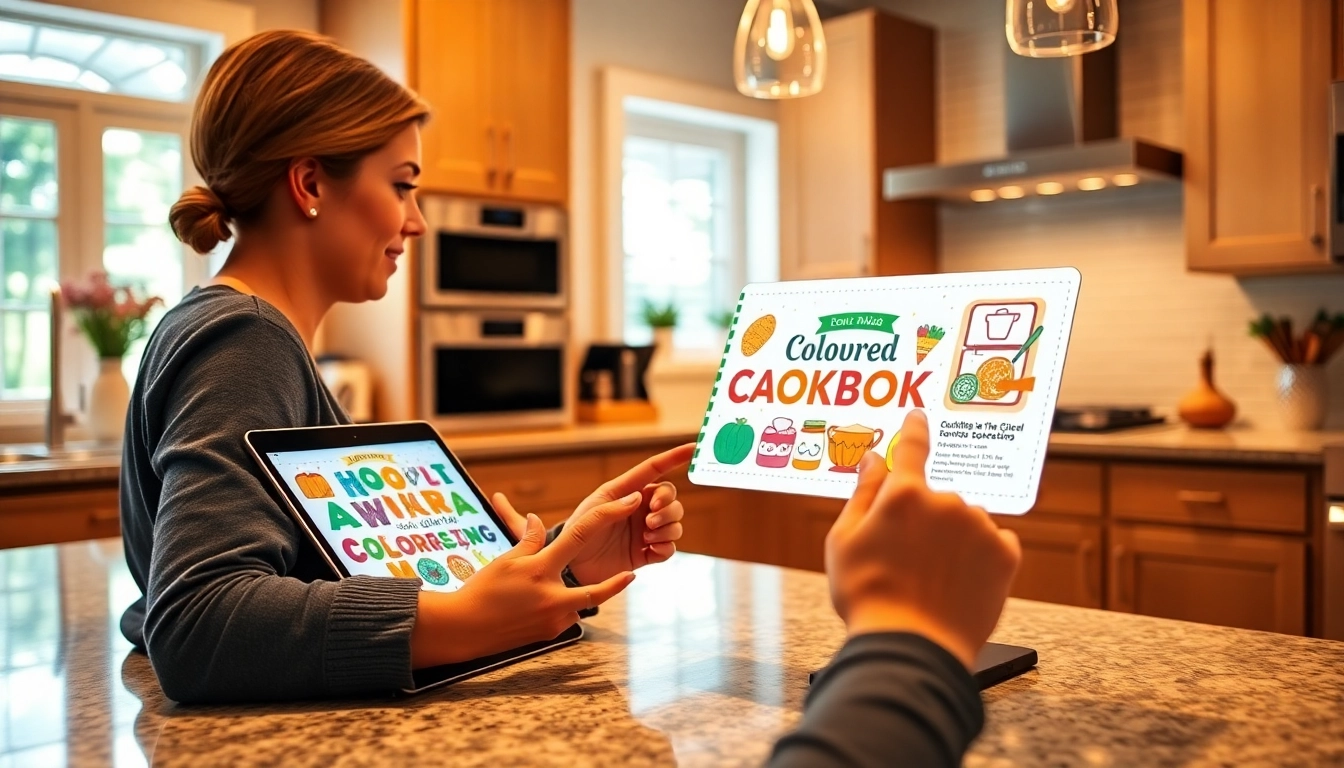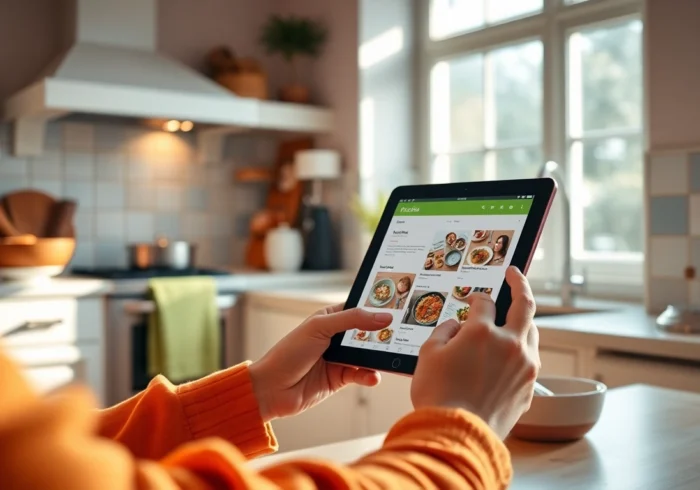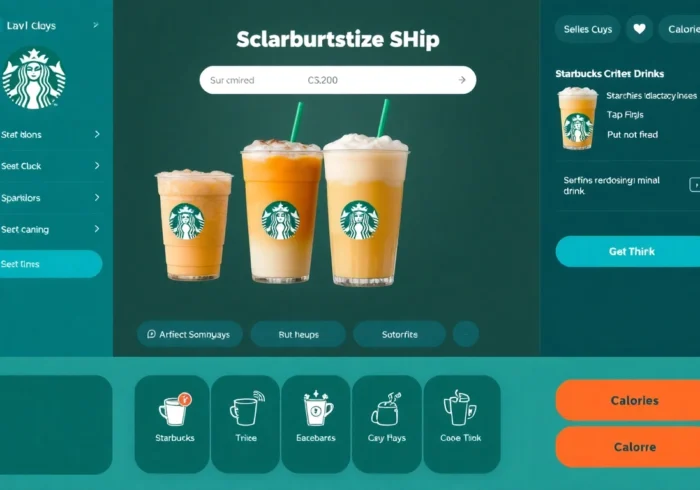1. Planning Your Custom Cookbook
Understanding Your Goals and Audience
Embarking on the journey to create your own cookbook begins with a clear understanding of your core objectives and target audience. Are you aiming to preserve family recipes, showcase a specific culinary style, or perhaps develop a professional culinary portfolio? Defining these goals helps streamline every subsequent step, from content gathering to design choices. For instance, a family-focused cookbook might prioritize personal stories and nostalgic anecdotes, while a professional chef’s collection could emphasize techniques, ingredient sourcing, and plating artistry. Recognizing your audience—whether it’s family, friends, or the general public—allows you to tailor your content to their preferences and expectations, ensuring your finished product resonates and provides genuine value.
For example, if your goal is to pass down treasured family recipes, consider including historical contexts or family stories alongside each dish. Conversely, if you’re crafting a cookbook for potential customers or food enthusiasts online, focus on clarity, appealing visuals, and step-by-step instructions. A well-defined purpose not only guides your content creation but also influences layout, design, and distribution strategies, making the process efficient and aligned with your vision.
Selecting a Theme or Focus
Thematic consistency enhances your cookbook’s appeal and ensures coherence. Choosing a specific theme—such as vegetarian cuisine, holiday treats, regional dishes, or nutritional plans—provides a cohesive identity that attracts a targeted audience. When you select a focus, it becomes easier to curate recipes, select appropriate imagery, and craft a narrative that appeals to enthusiasts of that particular niche.
For example, a focus on gluten-free baking can include recipes, ingredient tips, and personal stories related to dietary restrictions. Alternatively, a multicultural cookbook might explore international cuisines, incorporating cultural backgrounds, stories, and authenticity into each recipe. Clarity in theme guides the design aesthetic as well—be it rustic, modern, minimalist, or ornate—creating a visual language that complements your culinary focus.
Defining your theme upfront saves time and resources, prevents scope creep, and builds a clear marketing angle. Moreover, it allows you to differentiate your cookbook in a crowded marketplace, making it more attractive to potential buyers or recipients.
Gathering Your Favorite Recipes
The heart of any cookbook lies in its recipes. Begin by compiling your favorite dishes—those that have special significance, flavors you’ve perfected, or new creations you want to share. Make an inventory of recipes from various sources: personal collection, family archives, culinary blogs, or even newly experimented dishes. When gathering recipes, ensure they are tested and reliable; your readers should be able to reproduce the dishes with confidence.
Organizing your recipes systematically helps identify gaps and thematic clusters. For example, grouping together all breakfast recipes or holiday treats creates logical sections that enhance readability and usability. Consider annotating each recipe with notes on ingredient substitutions, techniques, or personal anecdotes that add flavor and context.
Quality images and detailed instructions are essential to elevate the recipes from mere instructions to an engaging user experience. Incorporate variations and tips for customization to appeal to a broader audience, whether novice cooks or seasoned chefs.
2. Organizing and Designing Your Cookbook
Creating a Logical Recipe Layout
Effective organization is crucial for cookbook usability. Starting with a clear, logical layout ensures that readers can find what they need effortlessly. Common organizational structures include categorizing recipes by meal type (breakfast, lunch, dinner), ingredient (vegetarian, gluten-free), or occasion (holidays, entertaining). You might also consider alphabetical or seasonal arrangements, depending on your audience’s preferences.
For example, a beginner-focused cookbook may benefit from stepwise sections like appetizers, main courses, and desserts. For comprehensive cookbooks, a two-tiered system—main categories with subcategories—works well. Incorporate a detailed table of contents and index to facilitate quick navigation. In digital formats, hyperlinks within the table of contents enhance accessibility.
Moreover, consider adding introductory sections, cooking tips, and ingredient guides that enrich the user experience. Each recipe should follow a consistent format—listing ingredients, step-by-step procedures, preparation time, servings, and nutritional info if relevant—to promote clarity and professionalism.
Choosing a Design Template or Style
Your cookbook’s visual identity significantly influences its appeal. Choose a design style that reflects your theme—be it rustic, modern, elegant, or playful. Many online platforms offer pre-designed templates that can be customized to match your aesthetic preferences, saving time and ensuring a polished look.
Pay attention to typography, color schemes, and layout balance. For instance, a minimalist style might rely on clean lines, ample white space, and a simple font, while a vintage-inspired theme might incorporate decorative fonts and textured backgrounds. Consistency across pages in fonts, heading styles, and color accents maintains a cohesive feel.
High-quality images, attractive page layouts, and carefully designed cover pages add value. Incorporate space for personal touches—handwritten notes or sketches—that can be digitized or printed directly in your book. This customization creates a unique and memorable keepsake or gift.
Adding Photos, Stories, and Personal Touches
Visual storytelling enhances the cooking experience. Including professional or candid photos of dishes, ingredients, or cooking processes makes recipes more approachable and visually appealing. Personal stories or anecdotes linked to each recipe foster emotional connections and lend authenticity.
For example, sharing the origin story of a family dish or a memorable celebration surrounding a particular recipe adds depth and context. These stories transform your cookbook from a simple recipe collection into a rich narrative that celebrates culinary heritage and personal history.
Additionally, consider adding decorative elements, such as hand-drawn illustrations, iconography, or stylized captions that reflect your chosen theme. Interactive elements like QR codes linking to cooking videos or blogs also modernize your cookbook and enhance user engagement.
3. Using Tools and Templates to Build Your Cookbook
Top Online Platforms for DIY Cookbook Creation
Choosing the right platform is pivotal in bringing your vision to life. Several online tools cater specifically to personalized cookbook creation, offering user-friendly interfaces, customizable templates, and printing options. Examples include CreateMyCookbook, Heritage Cookbook, Shutterfly, Lulu, and Canva.
build my own cookbook can be achieved smoothly through these specialized platforms, which often include drag-and-drop editors, recipe importing options, and professional-grade design templates. When selecting a platform, consider factors such as ease of use, customization flexibility, print quality, and pricing.
Some platforms offer advanced features like collaborative editing, cloud storage, or integration with photo libraries. Evaluate customer reviews, sample outputs, and support services before making your choice to ensure your final product exceeds expectations.
Tips for Using Design Software and Templates
Design software like Adobe InDesign, Canva, or Microsoft Publisher can offer greater control over layout and aesthetics if you prefer a DIY approach. Start with a template that closely matches your envisioned style; customize fonts, colors, and layout elements to align with your theme.
Pay attention to resolution and image quality—use high-resolution photos (300 dpi) for print-quality results. Maintain a consistent style for headings, captions, and recipe formatting for visual harmony. Take advantage of grid lines, style kits, and master pages to streamline the design process.
Previews and test prints are essential to catch color discrepancies, font readability, and layout issues. Use feedback from friends or beta testers to refine your design before finalizing the files for printing or digital distribution.
Incorporating Handwritten or Typed Recipes
Some creators prefer the charm of handwritten recipes—adding personal handwriting scanned into digital formats—while others opt for neatly typed recipes for clarity. Handwritten recipes imbue your cookbook with authentic personality but may require higher preservation care and higher-quality scanning to maintain legibility.
Typed recipes, created using word processing or design software, allow for consistent formatting and easier editing. For handwritten elements, consider using tools like WeTypeIt to convert handwritten notes into digital text, maintaining your personal touch while ensuring readability.
Whichever method you choose, balance aesthetics and practicality. Incorporate handwritten notes for special recipes or personal stories, and type standard recipes for ease of use and professional appearance.
4. Finalizing and Publishing Your Cookbook
Proofreading and Editing for Quality
Before releasing your masterpiece, meticulous proofreading and editing are essential. Check for typographical errors, consistent measurement units, accurate ingredient labels, and overall clarity. It’s often helpful to enlist a fresh set of eyes—friends, family members, or professional editors—to identify mistakes or ambiguities you might overlook.
Additionally, test each recipe by cooking—if possible—to ensure instructions translate correctly and produce the intended result. Incorporate feedback to refine steps, ingredient lists, and images. High-quality, error-free content not only improves user experience but also builds credibility and trust.
Choosing Printing Options or Digital Formats
Deciding between physical and digital formats depends on your goals, target audience, and budget. For physical copies, options include print-on-demand services like Lulu or traditional printing through local or online printers, with choices of hardcover, spiral-bound, or softcover formats.
For digital distribution, options include PDF ebooks, interactive flipbooks, or dedicated apps. Digital formats are more economical, instantly shareable, and easily updated, making them ideal for gifts, personal archives, or online sales.
Consider copyrighting your work, especially if you plan commercial distribution. Using software like CreateMyCookbook or Lulu can incorporate your copyright notices and licensing terms seamlessly, safeguarding your intellectual property.
Distribution Ideas: Gifts, Sales, or Keepsakes
Distribution channels are diverse. You can gift physical copies to family and friends, sell through online marketplaces like Amazon, Etsy, or your dedicated website, or distribute digital files via email or download links. Special editions, holiday-themed copies, or themed collections often perform well as personalized gifts.
Additionally, consider local markets, craft fairs, or culinary events if you wish to sell commercially. For a more hands-off approach, print-on-demand services handle both production and shipping, enabling you to focus on marketing and content quality.
To maximize reach, develop a compelling presentation—high-quality mockups, engaging descriptions, and targeted marketing efforts—highlighting the unique story behind your cookbook.
5. Enhancing Your Cookbook’s Performance and Sharing
Promoting Your Personalized Cookbook Online
Successful promotion amplifies your cookbook’s reach and impact. Leverage social media platforms—Instagram, Facebook, Pinterest—to showcase beautiful images, behind-the-scenes creation stories, or testimonials. Creating a dedicated website or blog provides a centralized hub for purchasing, sharing updates, and engaging with your audience.
Utilize SEO best practices to improve discoverability. Incorporate relevant keywords like “build my own cookbook” naturally into your content, meta descriptions, and tags. Collaborate with food bloggers, culinary influencers, or local community groups to expand your audience.
Offering limited-time discounts, giveaways, or exclusive content can boost visibility and engagement. Collect reviews and testimonials to build social proof and credibility.
Collecting Feedback and Improving Future Editions
Feedback from your initial readers is invaluable for refining your cookbook. Use surveys, direct messages, or online reviews to gather insights on recipe clarity, layout effectiveness, and overall satisfaction. Analyzing this feedback guides updates, new editions, or entirely new projects, ensuring continuous improvement.
Engaging your community—through forums, social media, or email lists—fosters loyalty and open dialogue, helping you stay attuned to your audience’s evolving tastes and needs.
Legal Considerations and Copyright Tips for DIY Cookbooks
Protecting your intellectual property is crucial, especially if you plan to sell or distribute widely. Although original content is automatically copyrighted, registering your work provides legal advantages. Be cautious with borrowing recipes—favor original creations or ensure proper attribution and licensing for sourced content.
Include disclaimers, licensing information, and copyright notices within your book. Consult legal professionals for comprehensive advice tailored to your distribution scope and content specifics.
For personal projects or family cookbooks, copyright considerations are minimal, but for commercial endeavors, formal registration and licensing protect your investments and creative rights.


